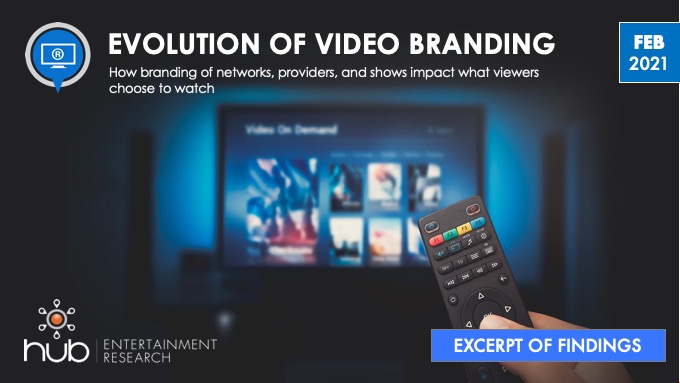First launched in 2016, Hub’s Evolution of Video Branding study tracks awareness, understanding, and perceptions of the full range of top players across the TV ecosystem—including both TV distribution platforms and TV networks. The study also examines the impact of these brand perceptions on consumers’ service use and show viewing decisions.
It’s safe to say that the TV brand landscape looks radically different today from how it looked only six years ago, when HBO became the first TV network to launch a direct-to-consumer streaming service. That service helped accelerate an important shift that had already begun with the introduction of Netflix, Amazon, and Netflix: the shift from a single platform for accessing one’s favorite TV shows, to the availability of multiple platforms, each with its own exclusive rights to content.
Although the sudden availability of disaggregated content was seen as a boon by many TV consumers (who relished the idea of paying for only the networks they want), the rapid growth of SVODs and direct-to-consumer platforms made it that much more difficult for viewers to locate one’s favorite shows or to discover new ones (where do I go to find show X again?). And those tasks are not likely to get much easier, as viewers must now begin to learn which individual networks and which individual shows are associated with new streaming services offered by media conglomerates (e.g., Peacock, Discovery+, Paramount+).
The 2021 wave of Hub’s Evolution of Video Branding study will examine the impact of these brand developments on consumers’ platform and viewing decisions—and explore how that impact has changed over time.
The study is conducted among 1,606 U.S. consumers age 16-74 who watch a minimum of 1 hour of TV per week.
